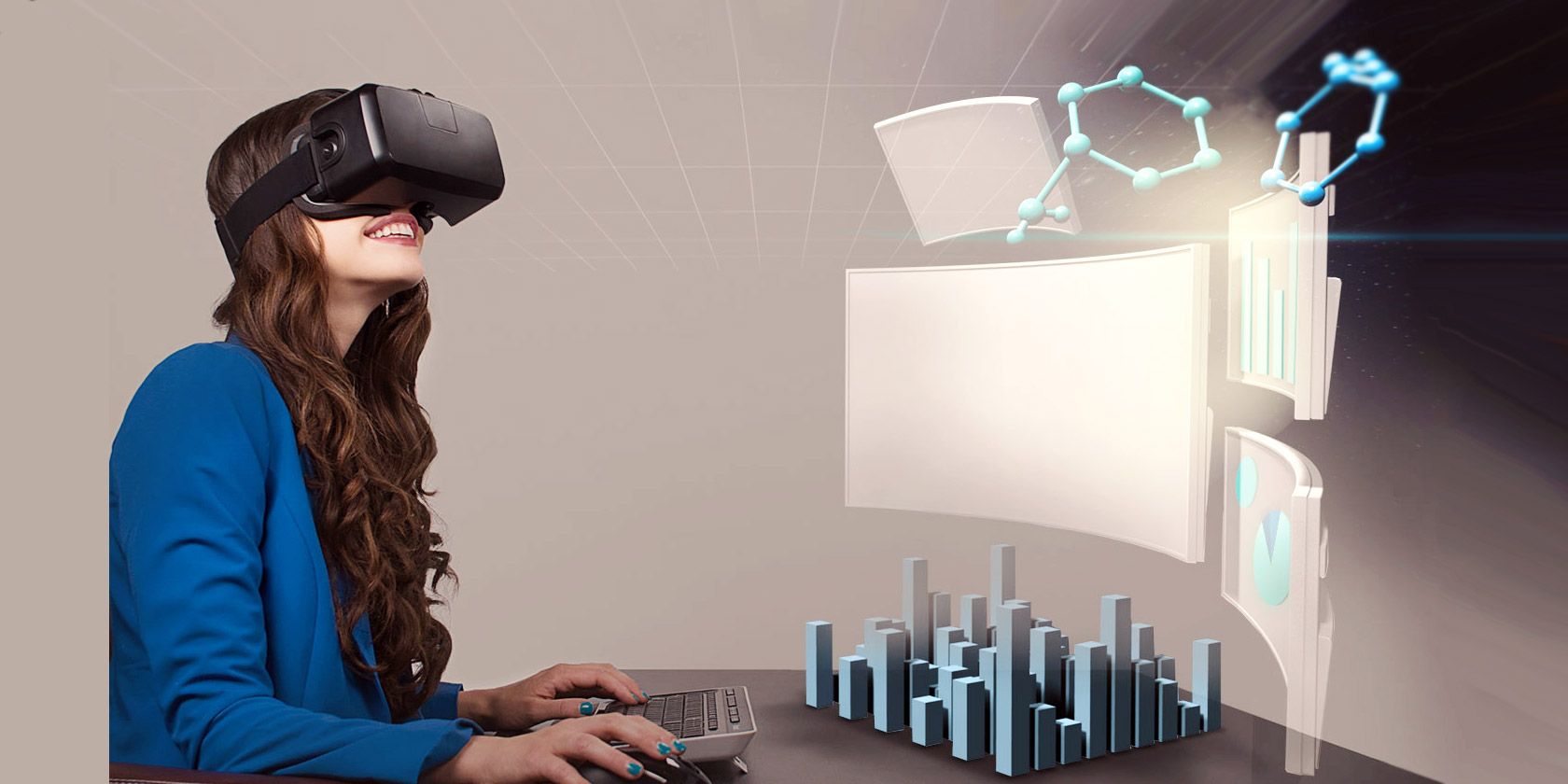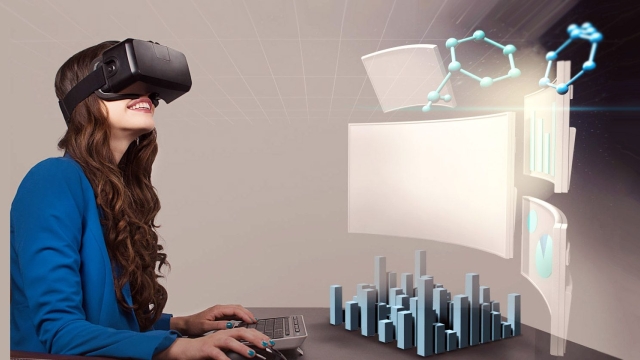Welcome to the immersive world of virtual reality! With advancements in technology, the realm of virtual reality has become more accessible than ever before. Imagine stepping into a whole new dimension, where you can explore fantastical landscapes, engage in thrilling adventures, or even create your own virtual universe. Virtual reality, often abbreviated as VR, has revolutionized the way we interact with digital content, transporting us to unimaginable places and experiences without ever leaving the comfort of our own homes.
Virtual reality apps are the windows into this captivating digital realm. These applications, tailored to specific devices and platforms, enable users to engage with virtual environments through the use of specialized headsets or even their smartphones. Whether you’re an avid gamer seeking heart-pounding action, a curious explorer looking to visit historical sites, or a creative soul yearning to bring your wildest imaginings to life, virtual reality apps provide a gateway to the extraordinary.
In this comprehensive guide, we will delve into the limitless possibilities of virtual reality technology. We’ll explore the diverse range of VR apps available, uncover the cutting-edge advancements that continue to drive the evolution of this immersive medium, and gain insights into how virtual reality is reshaping various industries, from gaming and entertainment to healthcare and education. So, fasten your virtual seatbelt and get ready to dive headfirst into the captivating world of virtual reality. Let’s unlock the potential of VR and embark on an unparalleled journey of exploration, innovation, and entertainment.
Exploring the World of Virtual Reality Apps
Virtual Reality (VR) is a groundbreaking technology that has revolutionized the way we experience digital content. With the rise of VR, a plethora of Virtual Reality apps have emerged, offering users the opportunity to dive into immersive and interactive virtual environments. These apps have the power to transport us to places we could only dream of, and allow us to explore new worlds right from the comfort of our own homes.
VR apps come in various forms, catering to different interests and preferences. Whether you’re a gaming enthusiast, an art lover, or someone seeking thrilling adventures, there’s an app for you. Virtual Reality opens up endless possibilities, enabling users to engage with content in ways never thought possible before.
One of the key components of Virtual Reality apps is the use of VR headsets. These headsets create a simulated environment that stimulates our senses, making us feel as if we’re truly present in a digital world. By wearing a VR headset, users can visually perceive and navigate through the virtual landscapes, providing a deeply immersive experience.
As technology continues to advance, Virtual Reality apps are becoming more accessible and user-friendly. The rapid evolution of VR technologies ensures that new and innovative experiences are constantly being developed. From exploring distant galaxies to examining ancient ruins, the potential of Virtual Reality is only beginning to be unlocked.
As we delve deeper into the realm of Virtual Reality, we are discovering the vast scope of what VR apps can offer. The endless possibilities provided by Virtual Reality technology make it an exciting and promising area to explore. So, fasten your VR headset, and get ready to unleash the full potential of Virtual Reality!
Unveiling the Technologies Behind Virtual Reality
Virtual Reality (VR) is an immersive technology that has gained significant popularity in recent years. It allows users to enter and experience a simulated environment that can be similar to or completely different from the real world. VR is made possible through a combination of several cutting-edge technologies that work in harmony to create a seamless and immersive experience.
One of the key technologies behind VR is head-mounted displays (HMDs). These are devices worn on the head that contain screens or lenses that display the virtual world to the user. HMDs come in various forms, from standalone devices to those that require connection to a computer or a gaming console. These displays are crucial in providing users with a visual experience that tricks their brain into perceiving the virtual environment as real.

Another important technology in VR is motion tracking. This technology enables the system to track the movements of the user in real-time and replicate them within the virtual environment. Motion sensors, such as accelerometers and gyroscopes, are used to detect and interpret the user’s movements. This allows for a more immersive experience, as users can physically interact with the virtual world by moving their body or manipulating objects.
In addition to HMDs and motion tracking, VR also relies on powerful computing devices to render and process the graphics required for a realistic virtual environment. High-performance processors and graphics cards are essential for delivering smooth and visually appealing experiences. These devices handle the complex calculations required to create and update the virtual world in real-time, ensuring that users can seamlessly navigate and interact with their surroundings.
By integrating these technologies, virtual reality has transformed from a mere concept into a tangible and engaging experience. From gaming and entertainment to education and training, VR has opened up a world of possibilities. With the continuous advancements in hardware and software, the potential of VR is only expected to grow, providing users with even more immersive and realistic experiences.
Harnessing the Power of Virtual Reality Tech
In today’s ever-evolving technological landscape, Virtual Reality (VR) has emerged as a groundbreaking innovation that has the potential to revolutionize various industries. By leveraging the power of VR technology, individuals can experience immersive and lifelike digital environments that were previously unimaginable. From entertainment and gaming to education and healthcare, the applications of VR are vast and diverse.
One of the key aspects of VR is the availability of numerous Virtual Reality apps that enhance the overall user experience. These apps open up a world of possibilities, allowing users to explore different virtual realms and engage with content in a unique and interactive manner. Whether it’s diving into the depths of the ocean, embarking on thrilling adventures, or even practicing professional skills in a safe environment, VR apps offer a gateway to unparalleled immersion and interactivity.
With the continuous advancement of Virtual Reality technology, the potential for its integration into various industries is only growing. In the field of education, VR can transport students to historical events, far-off places, and even microscopic realms, providing a hands-on and engaging learning experience. Similarly, in healthcare, VR simulations can aid in surgical training, phobia therapy, and pain management, leading to improved patient outcomes and a new era of medical advancements.
The power of Virtual Reality tech lies in its ability to transport individuals to alternate virtual dimensions, allowing them to explore and engage with digital content in ways that were previously unimaginable. From entertainment to education, and from gaming to healthcare, VR has the potential to enhance various aspects of our lives. As the technology continues to evolve and reach greater heights, the possibilities for its applications are truly limitless.
